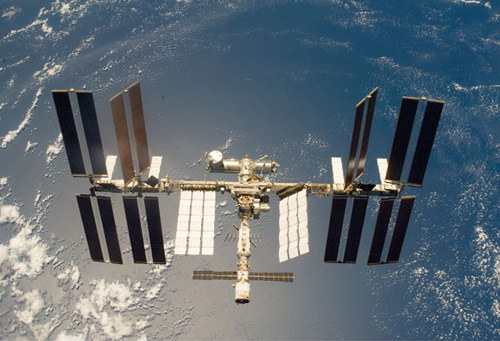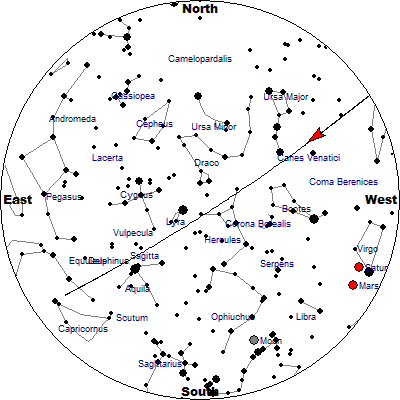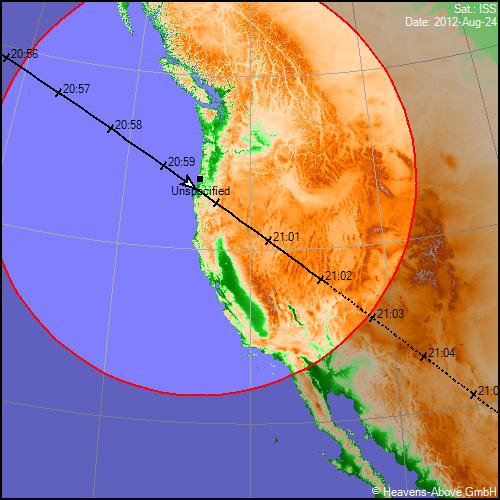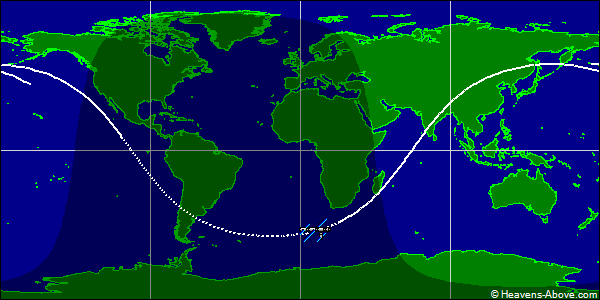International Space Station Sightings
Three weeks or so back, I was standing outside in the yard admiring the Milky Way in a very clear, jet-black nighttime sky, when I noticed a fast, silent, and very high light moving across the heavens. "Oh, a satellite", I surmised, watching it until it disappeared into the trees on the eastern horizon. Far out.
A night or so later, saw it again at nearly the same time. Sure enough, same moving light, same speed, nearly identical path.
This got me curious enough to use the Boogle search feature to see if I could figure out what satellite it was, because it wasn't a communications satellite in geosynchronous orbit. It didn't take more than a couple of clicks on the results to decide that it was the International Space Station. That makes sense, it's pretty large, after all.
Yeah, pretty large, like the size of a football field, according to Wikipedia, and weighing in at about a million pounds!

A few more clicks here and there brought up a site called Heavens Above, and after entering some location information (I used longitude and latitude coordinates because I know them, but you can click a map instead), we were presented with a table of dates and times that the ISS would be visible from my home. One of the resulting date/times was exactly when I had spotted the movement in the sky.
Of course, it's also possible to get results when the Station will be in the sky but NOT visible. What good is that? Well, for one thing, there is a permanent Amateur Radio station on board the spacecraft, and resident astronauts are encouraged to make contact (QSO's) with terrestrial ham radio operators. This works just as well during daylight hours as at night.
Over the course of the next several nights, I made it a point to look up the visible passes on Heavens Above, and be outside to watch the Station pass through the night sky. On August 24th, a particularly good appearance was noted, the Station was almost directly overhead, and the magnitude (brightness) was -3.2, almost as bright as it gets.

The site includes a "Ground Track" graphic, which helps to visualize the path that the Station takes when it passes overhead:

For the next week and a half, there will be no visible passes over my home, and the next round of sightings take place in the early morning hours. Don't know that I'll be up and about for that.

This graphic shows the orbit track of the Station today, Sept 1, 2012. I haven't quite figured out how the orbit pattern is set up, but it varies in some predictable pattern, and it will be back in the nighttime sky here the second week of October.
Original material ©1996-2026 Mr. Sharkey | All rights reserved
